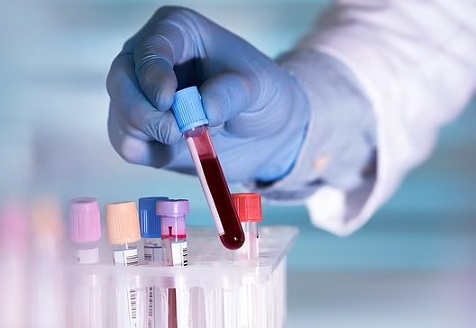Nikhil Prasad Fact checked by:Thailand Medical News Team Nov 06, 2024 5 months, 1 week, 6 hours, 51 minutes ago
Medical News: Understanding the Role of ENOX2 in Melanoma
Scientists from the University Hospital of Ulm, the University of Hohenheim, and Eberhard Karls University of Tuebingen have delved into the function of a protein known as ENOX2 in melanoma, one of the deadliest forms of skin cancer. This protein, which is linked to cancer growth and survival, could act as a new biomarker - an indicator for the progression and prognosis of melanoma. By analyzing tissue samples and melanoma cell lines, researchers found that high levels of ENOX2 were associated with poorer outcomes, specifically shorter overall survival (OS) and metastasis-free survival (MFS). This
Medical News report explores the findings, focusing on ENOX2's potential as both a prognostic marker and therapeutic target.
 New Biomarker for Melanoma Survival and Treatment Unveiled by Researchers
Why ENOX2 Stands Out as a Prognostic Marker
New Biomarker for Melanoma Survival and Treatment Unveiled by Researchers
Why ENOX2 Stands Out as a Prognostic Marker
ENOX2 attracted attention because of its unique properties. Typically present on cell surfaces, it’s involved in cell proliferation and survival, making it significant in the context of tumors. In their analysis, scientists used immunohistochemistry on tissue microarrays and RNA data from The Cancer Genome Atlas (TCGA). The results were striking: higher ENOX2 expression was linked to poorer survival rates and a higher likelihood of metastasis.
Interestingly, ENOX2 expression was not limited to melanoma cells. It was also found in normal skin cells, like keratinocytes and fibroblasts, which challenges the idea of it being a strictly cancer-specific marker. However, its high expression in malignant cases suggests its potential as a prognostic marker. Patients with early-stage melanoma who exhibited high ENOX2 levels had notably reduced MFS. In later stages, high ENOX2 levels continued to correlate with poor survival outcomes.
ENOX2 as a Therapeutic Target
Another exciting aspect of ENOX2 is its potential as a therapeutic target. Researchers observed that an inhibitor of ENOX2, phenoxodiol (PXD), could suppress melanoma cell proliferation. PXD achieved this by interfering with the AKT signaling pathway, which is often active in cancer cells. By blocking ENOX2, PXD essentially stunted the growth of melanoma cells.
A key finding was that PXD’s impact was more pronounced in combination with a common BRAF inhibitor, vemurafenib. Melanoma cells with BRAF mutations, which are notoriously difficult to treat due to resistance development, responded well to this combination. This dual approach helped reduce phosphorylation of the AKT protein, a critical player in melanoma survival. Reduced AKT activity slows down cell growth and enhances cancer cell vulnerability to other treatments. These findings underscore ENOX2 inhibition as a promising complementary strategy to improve existing treatments for BRAF-mutated melanoma.
The Challenges and Future Directions
One limitation noted was the high variability in ENOX2 expression across different patients and cell types. Researchers also acknowledged
that ENOX2’s non-specific presence in benign cells like fibroblasts might complicate its use as a standalone diagnostic marker. Despite this, the potential to target ENOX2 in treatment remains strong. Ongoing studies aim to refine the diagnostic use of ENOX2 by combining it with other biomarkers to improve accuracy.
In terms of treatment, PXD alone did not entirely reverse resistance in melanoma cells that had already adapted to BRAF inhibitors. However, combining PXD with BRAF inhibitors showed additive effects, slowing down melanoma progression and possibly preventing the onset of resistance in some cases. These results suggest a novel treatment approach where ENOX2 inhibition could be introduced at an early stage, complementing other therapies.
Conclusion: ENOX2’s Potential in Melanoma Care
The discovery of ENOX2 as both a prognostic marker and therapeutic target could reshape melanoma treatment. For patients, this means a new way to understand their prognosis. High ENOX2 levels could indicate a more aggressive melanoma that may benefit from intensified treatment strategies, including the addition of ENOX2 inhibitors like PXD alongside standard therapies. For clinicians, the insights into ENOX2 offer a promising direction to improve patient outcomes through personalized approaches.
Further research is necessary to validate these findings across larger patient populations and explore the therapeutic implications of ENOX2 inhibitors more deeply. However, the current study provides a solid foundation for the future integration of ENOX2 into clinical practice.
The study findings were published in the peer-reviewed International Journal of Molecular Sciences.
https://www.mdpi.com/1422-0067/25/21/11853
For the latest on Melanoma, keep on logging to Thailand
Medical News.
Read Also:
https://www.thailandmedical.news/news/thailand-led-medical-study-finds-that-malabar-spinach-shows-promise-in-preventing-skin-disorders-including-melanoma
https://www.thailandmedical.news/news/malignant-melanoma-a-new-hope-with-vitamin-d
